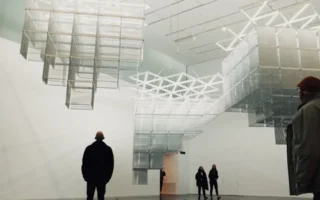Introduction:
Romanesque architecture stands as a testament to the ingenuity and craftsmanship of medieval builders. Characterized by its robust stone structures, thick walls, and decorative detailing, Romanesque architecture flourished throughout Europe from the 10th to the 12th centuries. In this exploration, we unravel the key elements utilized in Romanesque architecture, uncovering the techniques and features that define this iconic style.
1.Rounded Arches: The Arch of Endurance
The Arch as a Signature Feature: Romanesque architecture is renowned for its widespread use of rounded arches, which replaced the earlier Romanesque-style arches.
Structural Stability: Rounded arches distribute weight more evenly, allowing for greater support and stability in the construction of vaulted ceilings and arcades.
Symbolism and Ornamentation: Arches served not only a structural purpose but also provided opportunities for decorative embellishments, including intricate carvings and sculptural reliefs.
2.Thick Walls: Fortresses of Faith
The Fortress Mentality: Romanesque builders constructed churches and cathedrals with thick, fortress-like walls, reflecting the turbulent times of the medieval period.
Defense and Durability: Thick walls offered protection against external threats such as invasion and fire, ensuring the safety of both the structure and its occupants.
Expressive Surfaces: Despite their utilitarian function, Romanesque walls often featured decorative elements such as blind arcading, pilaster strips, and geometric patterns, adding visual interest to their formidable facades.
3.Barrel Vaults and Groin Vaults: Engineering Marvels
Vaulting the Heavens: Romanesque architecture embraced the use of barrel vaults and groin vaults to create expansive interior spaces and support the weight of heavy stone roofs.
Structural Ingenuity: Vaults were constructed using a series of interlocking stone blocks, known as voussoirs, which were carefully arranged to distribute weight along the curve of the vault.
Transformative Effects: Vaulted ceilings not only provided structural support but also imparted a sense of grandeur and verticality to the interiors of Romanesque churches and cathedrals.
4.Towers and Bell Towers: Reaching for the Divine
Vertical Emphasis: Romanesque buildings often featured towers and bell towers that rose dramatically towards the heavens, symbolizing the aspirations of medieval society towards the divine.
Functional and Symbolic Roles: Towers served practical purposes such as housing bells, providing lookout points, and acting as landmarks in the surrounding landscape.
Architectural Expression: Towers were often adorned with decorative elements such as blind arcading, turrets, and spires, enhancing their visual impact and contributing to the overall aesthetic harmony of the structure.
5.Sculptural Decoration: Stories in Stone
Carved in Stone: Romanesque architecture abounds with sculptural decoration, including capitals, tympanums, and friezes, which depicted biblical narratives, saints, and symbolic motifs.
Communicating Meaning: Sculptural elements served as visual aids for the largely illiterate medieval population, conveying religious teachings and moral lessons through intricate iconography.
Artistic Flourishes: Master stonemasons and artisans showcased their skills through the creation of finely detailed sculptures, imbuing Romanesque buildings with a sense of craftsmanship and reverence.
Conclusion:
As we journey through the architectural wonders of the Romanesque era, we encounter a world where faith, engineering prowess, and artistic expression converge. From the sturdy embrace of rounded arches to the soaring heights of bell towers, each element of Romanesque architecture tells a story of human aspiration and creativity. By understanding the techniques and features utilized in Romanesque buildings, we gain insight into a bygone era and appreciate the enduring legacy of medieval craftsmanship.




